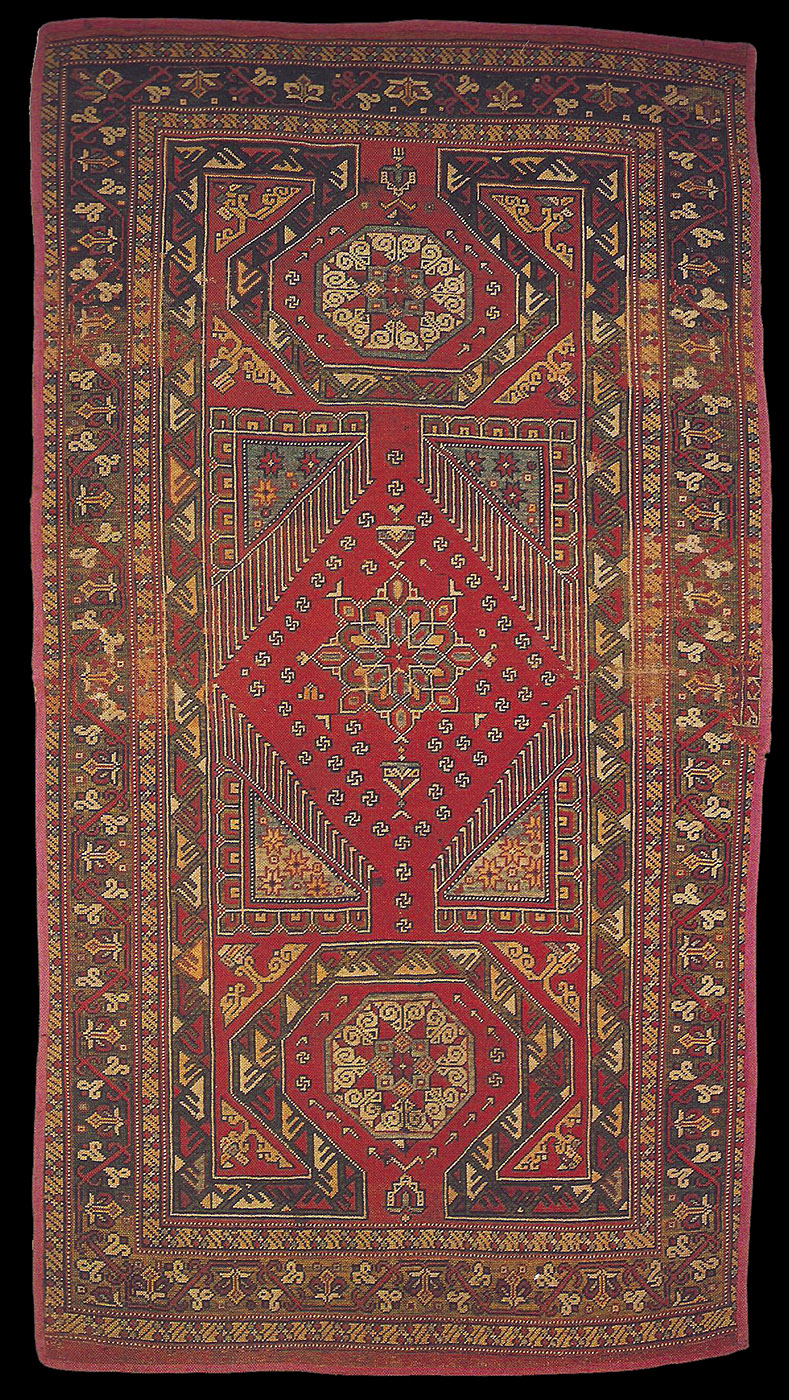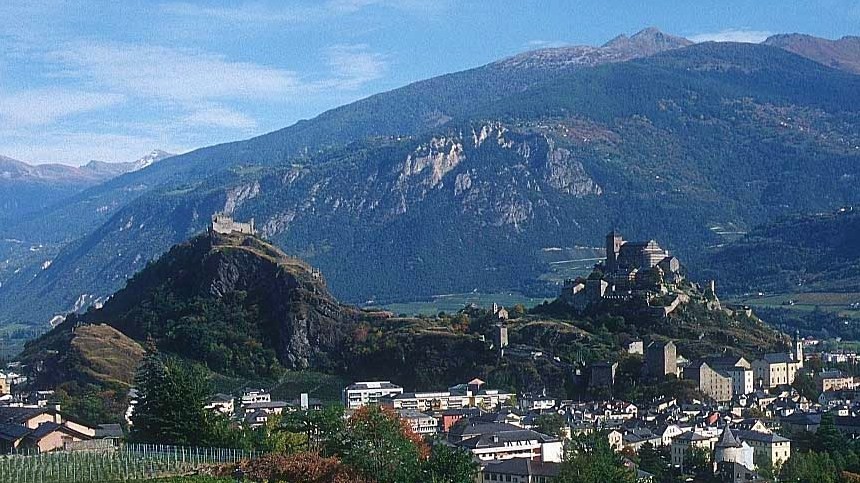|
Keyhole Design Rug with Ghirlandaio medallion and Bellini type arches,
West Anatolia, late 15th or early 16th century, 1.28 (or 1.38) x 2.27m (4'2"
x 7' 5"). Cathedral of St. Catherine, Sion, Switzerland
On first impression this appears to be a 17th century Anatolian
village rug. A closer examination reveals many features that point to a
much earlier date and show it to be one of the best preserved of its type.
It belongs to a group known as 'keyhole' or 're-entry' rugs which date to
the late 15th century. The design has an extra border surrounding the
field, which enters the field in an octagonal form at one or both ends.
There are four compositonal variants of the design: two are directional,
two can be viewed from either end.
The border is the same as the primary borders on certain rugs which
contain rows of large octagons in the field, and are currently attributed
to the 15th century. The inner band that forms the keyhole or re-entry
octagon is composed of small 'E' motifs, first seen on a rug depicted in a
mid-15th century painting. The central medallion first appears on a rug in
a painting of the third quarter of the 15th century by Domenico
Ghirlandaio, now in the Uffizi Museum in Florence. The corners surrounding
the central medallion are filled with a comb-like design, also found in a
rug depicted in 1495 by Carpaccio. The octagons, filled with, white
spokes, are typical of rugs of the late 15th and early 16th century. The
drawing of the rug is particularly fine.
Three other known rugs with oneway designs are related. One is in the Turk
ve Islam Museum in Istanbul,9 a second i.s in the Topkapi Saray, with the
lower end of the field almost identical,l0 and the third, with many of the
same ornaments, in particular the medallion, surrounding comb-like motifs
and the re-entry band design, appears in a painting by Dosso Dossi.''
It is, for the most part, in full pile, wilhjusl one small patch from
a rug of the same period. The colours are soft, but particularly bright,
and the rug appears to be unfaded. In handle, colours, wool and structure
it appears to be closely related to several well known 15th century rugs,
notably a fragment in the Victoria and Albert Museum in London.l2 Whilst
the museums in Istanbul have numerous 15th and early 16th century rugs,
most are in. poor condition. The discovery of an unknoivn rug of this
type, is an event of great rarity.
Literature: A Discovery at Sion, by Marino and Clara Dall'Oglio (featured
in HALI Issue 27 in 1985)
|


